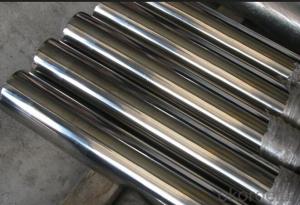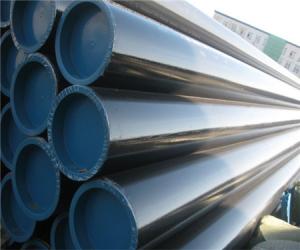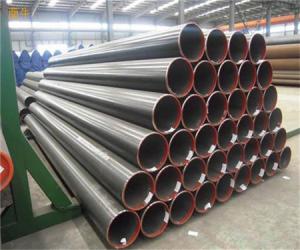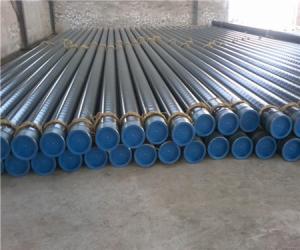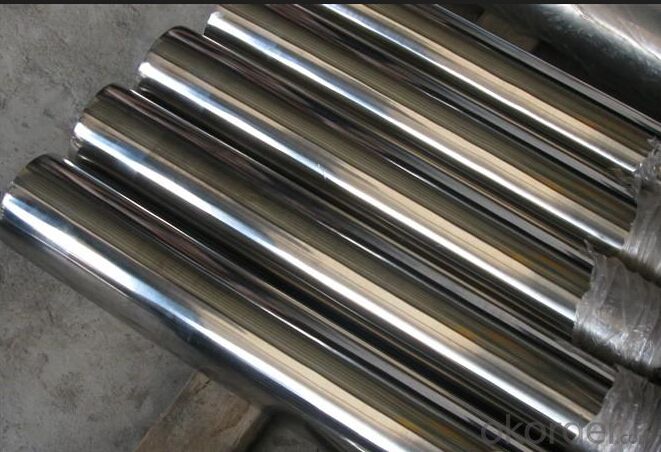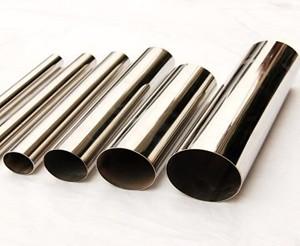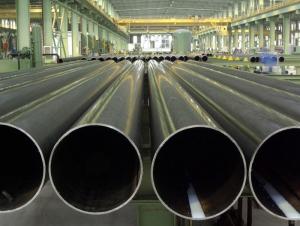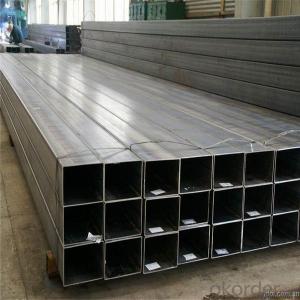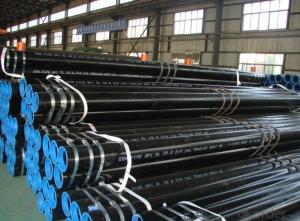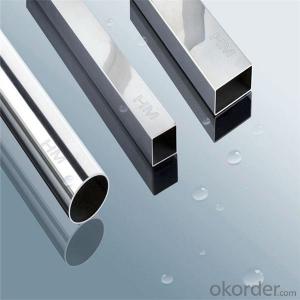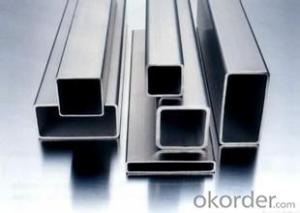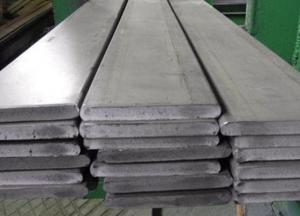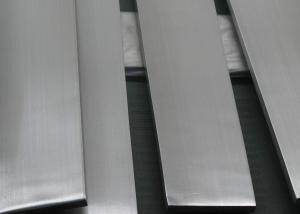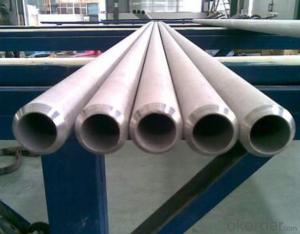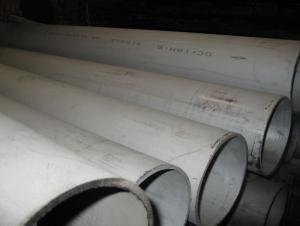Welded Stainless Steel Tube/Pipe Manufacturer
- Loading Port:
- China Main Port
- Payment Terms:
- TT or LC
- Min Order Qty:
- 30 kg
- Supply Capability:
- 12000 kg/month
OKorder Service Pledge
OKorder Financial Service
You Might Also Like
1、Structure of Seamless Pipe ASTM A106/53:
Seamless pipe is formed by drawing a solid billet over a piercing rod to create the hollow shell. As the manufacturing process does not include any welding, seamless pipes are perceived to be stronger and more reliable. Historically seamless pipe was regarded as withstanding pressure better than other types, and was often more easily available than welded pipe.
Application
carbon seamless steel pipes are widely used in gas, water and oil, transpotation;constructions;Bridge,highway,windows of model steel door; building materials;fences;heating facilities Fluid Pipe;conduit pipe,scaffolding pipe.etc.
Payment Terms: L/C D/A D/P T/T
Packing and shipment
Packaged in bundles,as per customers' requirements, it can also bepackagesd as beveled ends, typed marking, black painting, plastic caps protection,woven bags packing
For 20" container the max length is 5.8m; For 40" container the max length is 12m. other options are available based on customer requests. Please discuss when placing orders.
2、Main Features of the Seamless Pipe ASTM A106/53:
• High manufacturing accuracy
• High strength
• Small inertia resistance
• Strong heat dissipation ability
• Good visual effect
• Reasonable price
3、Seamless Pipe ASTM A106/53 Specification:
Standard | GB, DIN, ASTM ASTM A106-2006, ASTM A53-2007 |
Grade | 10#-45#, 16Mn 10#, 20#, 45#, 16Mn |
Thickness | 8 - 33 mm |
Section Shape | Round |
Outer Diameter | 133 - 219 mm |
Place of Origin | Shandong, China (Mainland) |
Secondary Or Not | Non-secondary |
Application | Hydraulic Pipe |
Technique | Cold Drawn |
Certification | API |
Surface Treatment | factory state or painted black |
Special Pipe | API Pipe |
Alloy Or Not | Non-alloy |
Length | 5-12M |
Outer Diameter | 21.3-610mm |
Grade | 20#, 45#, Q345, API J55, API K55, API L80, API N80, API P110, A53B |
Standard | ASME, ASTM |
1) Material:20#(ASTM A 106/A53 GRB.API5LGRB,GB),45#,16Mn,10#.
2) Specification range:OD:21.3-610mm,WT:6-70mm,length:6-12m or according to the requirement of clients.
3) Excutive standards:GB,ASME API5L.ASTM A 106/A53,Despite of the above standards,we can also supply seamless steel pipe with standard of DIN,JIS,and so on,and also develop new products according to the requirements of our clients!
4) Surface:black lacquered,varnish coating or galvanized.
5) Ends:Beveled or square cut,plastic capped,painted.
6) Packing:bundles wrapped with strong steel strip,seaworthy packing.
4、Packaging & Delivery
Packaging Details: | seaworthy package,bundles wrapped with strong steel strip |
Delivery Detail: | 15-30days after received 30%TT |
5、FAQ of Seamless Pipe ASTM A106/53:
①How is the quality of your products?
Our products are manufactured strictly according to national and internaional standard, and we take a test
on every pipe before delivered out. If you want see our quality certifications and all kinds of testing report, please just ask us for it.
Guaranteed: If products’ quality don’t accord to discription as we give or the promise before you place order, we promise 100% refund.
②How about price?
Yes, we are factory and be able to give you lowest price below market one, and we have a policy that “ for saving time and absolutely honest business attitude, we quote as lowest as possible for any customer, and discount can be given according to quantity”,if you like bargain and factory price is not low enough as you think, just don’t waste your time.Please trust the quotation we would give you, it is professional one.
③Why should you chose us?
Chose happens because of quality, then price, We can give you both.Additionally, we can also offer professional products inquiry, products knowledge train(for agents), smooth goods delivery, exellent customer solution proposals.Our service formula: good quality+good price+good service=customer’s trust
SGS test is available, customer inspection before shipping is welcome, third party inspection is no problem.
6、Seamless Pipe ASTM A106/53 Images:
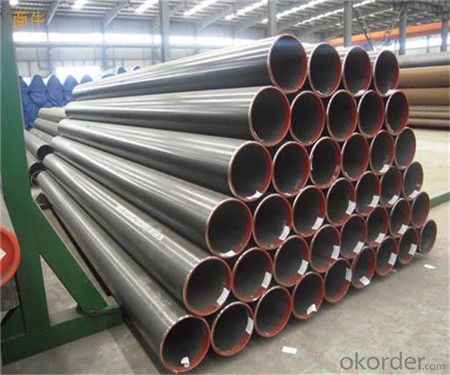
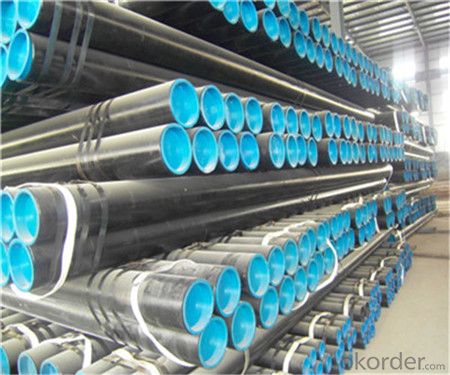
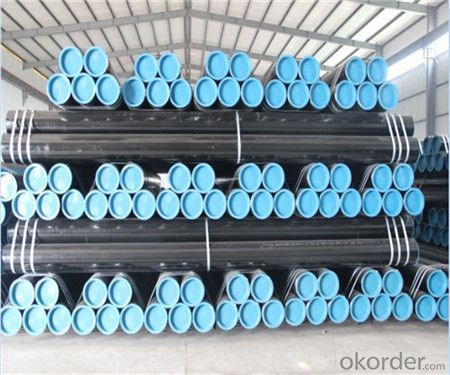
- Q: Stainless steel heating oven tube after treatment is heating blue will not be red?
- Because sometimes we do tubular heater, in order to better improve its life, will reduce the heating pipe surface power, but it itself heating speed is slow, take more time to reach the temperature you want.
- Q: Can stainless steel pipes be used for cryogenic applications?
- Yes, stainless steel pipes can be used for cryogenic applications. Stainless steel is known for its excellent low-temperature properties, including good strength, ductility, and resistance to corrosion. These properties make stainless steel pipes suitable for transporting and storing cryogenic fluids such as liquid nitrogen, oxygen, or argon. The high strength-to-weight ratio of stainless steel allows for the construction of lightweight and durable cryogenic systems. Additionally, stainless steel pipes can withstand the extreme temperature gradients and thermal stresses commonly encountered in cryogenic applications. However, it is important to choose the appropriate grade of stainless steel that is specifically designed for cryogenic service to ensure optimal performance and safety.
- Q: What are the common types of fittings used with stainless steel pipes?
- Stainless steel pipes are commonly paired with various types of fittings. Some fittings that are frequently utilized include: 1. Stainless Steel Threaded Fittings: These fittings possess threaded ends, enabling effortless connection to pipes or other fittings. They are typically employed in low-pressure scenarios and can be easily installed or removed using a wrench. 2. Stainless Steel Butt-Weld Fittings: Butt-weld fittings are utilized to seamlessly join stainless steel pipes. These fittings are directly welded to the pipe, resulting in a robust and leak-free connection. Butt-weld fittings find common use in high-pressure or high-temperature applications. 3. Stainless Steel Flanges: Flanges are employed to bolt pipes or fittings together, ensuring a secure and inflexible connection. They can be conveniently disassembled when necessary. Various types of flanges are available, including slip-on, weld neck, socket weld, and blind flanges. 4. Stainless Steel Compression Fittings: Compression fittings create a tight seal between pipes by compressing a ferrule against the pipe. They are commonly found in plumbing systems and provide a trustworthy and leak-free connection. 5. Stainless Steel Camlock Fittings: Camlock fittings are quick-connect fittings frequently used in industrial settings. They consist of a male and female end that can be effortlessly joined by simply pushing them together and locking them in place. Camlock fittings are well-regarded for their user-friendly nature and versatility. These are just a few examples of the fittings commonly employed with stainless steel pipes. The choice of fitting depends on the specific application, pressure, temperature, and other relevant factors. It is crucial to select the appropriate fitting to ensure a secure and dependable connection.
- Q: What is the difference between 316 and 316H stainless steel pipes?
- The main difference between 316 and 316H stainless steel pipes lies in their carbon content. 316 stainless steel pipes have a maximum carbon content of 0.08%, which makes them suitable for applications where corrosion resistance is important, such as in marine environments. They are also known for their excellent welding and forming properties, making them a popular choice in various industries. On the other hand, 316H stainless steel pipes have a higher carbon content, typically around 0.04-0.10%. This increased carbon content provides improved high-temperature strength and creep resistance, making them suitable for applications where the pipes will be subjected to elevated temperatures, such as in high-pressure steam systems or in the petrochemical industry. In summary, while both 316 and 316H stainless steel pipes offer good corrosion resistance and overall performance, the 316H variant is specifically designed to withstand higher temperatures and offer better strength properties.
- Q: Mirror stainless steel tube 60*60 how much is one meter?
- Examples are stainless steel 63 round tubes, solid thickness 0.82 stainless steel tubes, single support 6 meters long, weight (63-0.82) *0.82*0.02491*6=7.62kg, a six meter long 63 round tube, thickness 0.82, theoretical weight is 7.62kg;
- Q: Is stainless steel flexible enough for plumbing applications?
- Indeed, stainless steel proves itself to be sufficiently flexible for plumbing purposes. Renowned for their robustness and sturdiness, stainless steel pipes and fittings also possess a certain level of adaptability. This adaptability facilitates effortless installation in a wide range of plumbing systems, even those with intricate designs or confined spaces. Stainless steel pipes can be manipulated and molded without compromising their structural integrity, rendering them suitable for both residential and commercial plumbing ventures. Furthermore, stainless steel exhibits remarkable resistance to corrosion, a vital quality in plumbing scenarios where exposure to water and other corrosive substances is common. Overall, the combination of strength, durability, and flexibility that stainless steel offers makes it an excellent option for plumbing applications.
- Q: How do stainless steel pipes perform in corrosive environments?
- Stainless steel pipes perform exceptionally well in corrosive environments. Due to the presence of chromium in their composition, stainless steel pipes are highly resistant to corrosion and oxidation. This unique property makes them ideal for various applications where exposure to corrosive substances, such as acids, chemicals, and saltwater, is common. The chromium content in stainless steel forms a protective layer on the surface of the pipes, known as the passive layer. This passive layer acts as a shield against corrosive elements, preventing the underlying metal from being affected. This means that stainless steel pipes can withstand prolonged exposure to corrosive environments without deteriorating or losing their structural integrity. Furthermore, stainless steel pipes are also resistant to pitting corrosion, which occurs when localized damage to the passive layer leads to the formation of small pits or holes on the surface. This resistance to pitting corrosion makes stainless steel pipes highly reliable and long-lasting in corrosive environments. In addition to corrosion resistance, stainless steel pipes also offer other beneficial properties such as strength, durability, and high temperature resistance. These qualities make stainless steel pipes a preferred choice in various industries including chemical processing, oil and gas, marine, wastewater treatment, and many others. Overall, stainless steel pipes are known for their exceptional performance in corrosive environments. Their resistance to corrosion, pitting, and high temperatures, coupled with their durability and strength, make them a reliable and cost-effective choice for applications where protection against corrosion is crucial.
- Q: Why is the outer diameter of 1 inch galvanized pipe 33.7? And the outer diameter of one inch stainless steel pipe is 25.4
- The 1 inch galvanized pipe refers to the nominal size holes of 1 inches of water, the outer diameter is 33.7, its diameter fits a 1 inch pipe thread wire, and one inch stainless steel tube outer diameter is 25.4 that of the tube is in diameter standard specifications.
- Q: 304 stainless steel pipe, 20*2 pressure, how many kilograms?
- 304 stainless steel is a brand of stainless steel produced according to the ASTM standard in the United states. 304 is equivalent to 0Cr19Ni9 in our country(0Cr18Ni9) stainless steel. 304 chromium 19%, containing nickel 9%. The 304 is the most widely used stainless steel, heat-resistant steel, steel, steel industry utility. For food production equipment, general chemical equipment, nuclear energy, etc..
- Q: Are stainless steel pipes suitable for food processing applications?
- Yes, stainless steel pipes are highly suitable for food processing applications. This is because stainless steel is resistant to corrosion, easy to clean and sanitize, and does not react with food or alter its taste. Additionally, stainless steel pipes comply with hygiene and safety standards, making them ideal for the food industry.
Send your message to us
Welded Stainless Steel Tube/Pipe Manufacturer
- Loading Port:
- China Main Port
- Payment Terms:
- TT or LC
- Min Order Qty:
- 30 kg
- Supply Capability:
- 12000 kg/month
OKorder Service Pledge
OKorder Financial Service
Similar products
Hot products
Hot Searches
Related keywords
